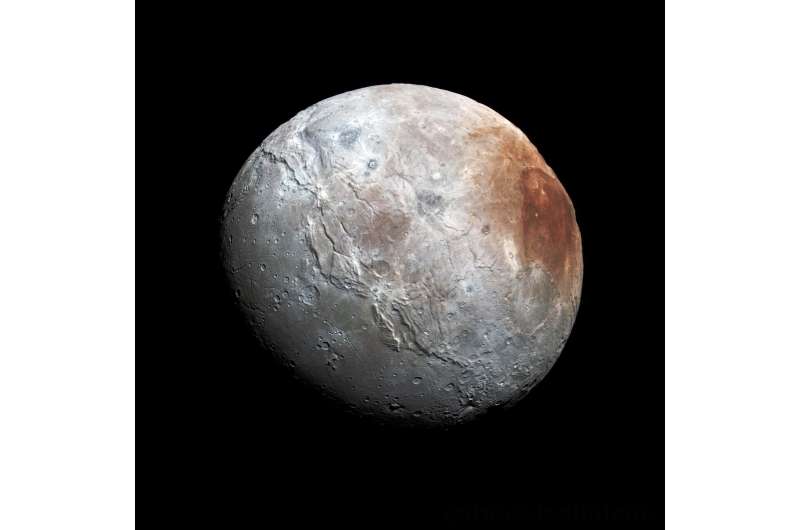September 7, 2022 report
A new explanation for the reddish north pole of Pluto's moon Charon

A trio of researchers at Purdue University has developed a new theory to explain why Pluto's moon Charon has a reddish north pole. In their paper published in the journal Nature Communications, Stephanie Menten, Michael Sori and Ali Bramson, describe their study of the reddish surfaces of many icy objects in the Kuiper Belt, and how they might relate to Charon's reddish pole.
Prior research has shown that many icy objects in the Kuiper belt are partly or entirely covered in reddish brown material. Prior research has also shown that the material is a kind of tholin—compounds that are formed when organic chemicals are showered with radiation. But that has raised the question of where the organic compounds may have come from. In this new effort, the researchers theorize that it comes from methane released from cryovolcanoes.
To test their theory, the researchers turned to Pluto's moon Charon, whose north pole is covered with tholin. They note that prior research suggests that gases escaping from Pluto are responsible for the reddish pole. But prior research has also shown that the moon was once covered with a liquid ocean that contained many materials, including methane.
As the ocean froze, the methane would have become trapped in the ice, the researchers note. They note also that as the water became pressurized, cracks would have formed, leading to occasional eruptions. Such cryovolcanic eruptions, they suggest, could have released some amount of methane gas. And if some of that methane gas managed to drift all the way to the north pole, it would have frozen and fallen to the surface. And if it fell to the surface, it would have been subjected to millions of years of radiation from the sun, making it turn red.
The researchers created simulations of methane molecules drifting around in the Charon atmosphere, calculating how much methane could have escaped under such a scenario and how much might have made it to the north pole. They found that approximately 1000 billion metric tons of the gas could have made it to northern pole—more than enough to create a red cap.
More information: Stephanie M. Menten et al, Endogenically sourced volatiles on Charon and other Kuiper belt objects, Nature Communications (2022). DOI: 10.1038/s41467-022-31846-8
Journal information: Nature Communications
© 2022 Science X Network





















